Our rented home in Seven Bungalows was chosen for two reasons. One, because it was located abutting a metro station, this implied good subsequent connection to the local train since our workplaces were far; and two, because the entire ground floor of the large building was a market where you could buy everything from a pin to a plane. Of course the gorgeous society garden was a bonus, as was the fact that this house was always brimming with visiting friends and family. In that sense it was a typical bombay kholi – it could happily accommodate anyone and everyone, and so long as you could get a rickshaw or other conveyance and get to a station easily, that was plenty.
So over the last few years and more personally for me, home was mostly a station to sleep, and to store. Mikail would work from home, so he still was more inside, but I had always dwelled outside the house. This home had hardly seen us indoors on weekends, or long holidays, and was quite unaccustomed to having just the two of us around for long durations.
Cut to the new normal, where we had already spent the last five months all stocked up and locked up inside this space – inhabited and occupied it like never before, with no end in sight. The farthest we travelled was into our google photo gallery, reminiscing experiences of the past. But for the longest, we became contained in the container of our things.
While living this vicious cycle and trying to understand ‘home’ for myself, I got an opportunity to teach a module on housing, which i decided to call ‘Sheltering Idiosyncrasies of Home Spaces’. In this research module, along with senior students of SEA, we mobilised the trope of typology and its affordances, and did detailed stories of lived experiences of homes, through tracing the inhabitants’ rituals and routines.
Meanwhile, offline, M and I were itching to get away for a few days to break the endless loop of our new daily practices, when we chanced upon a family’s house on a farm in Dahanu, just a couple of hours north of Mumbai. Dahanu is the last station on the western local line – super convenient to get to in non-covid times and the train is usually empty in the mornings because you are travelling away from the city. I got in touch with Fawzan, the host and owner, and twelve hours after we had discovered that this place existed, we were on our way to it! Our only questions to him before going were about availability of internet because we had work to take care of, and if it was okay to freeze this plan, more for the safety of everyone who stayed at the farm than ours, because we were the parched city-dwellers travelling to this safe haven. His only response to that was – “We are in the middle of nature, and we believe nature heals.“.I also spoke to the caretaker, Swati, who sounded very warm and assured this was okay to do. And thus we decided to head to dwell in the rural idyll for a few days.
There was the usual excitement of packing for a trip, but also some apprehension because this was not just another time. The only reason we could go, of course, is because we stay by ourselves, and do not risk anyone older, coming back home. On the cab to Dahanu, we all had our masks on throughout the journey, and had the windows rolled down despite the heavy downpour, to allow air circulation. Google maps directed us to a point, after which a drawn up map Fawzan sent and the villagers pointed us to the farm. The main gate had a little house with a large porch for the main caretaker-cum-farmer, Shinde Sahab, who directed us a few hundred metres ahead on the gravelly road that disappeared into the trees. We slowly drove past maize, chickoo, palms and mangoes to arrive at the house itself.

By 9:30am, we had unloaded our saaman (majorly including our laptop bags, yoga mats and scrabble), washed our hands with soap and sanitiser, exchanged greetings with Swati, Rameshwar and little Pradnya in the verandah, felt okay enough to take off our masks, and had agreed to a gracious offering of steaming lemongrass chai and some biscuits as we sat opposite the kitchen counter on the upcylced crate benches and a long table. Post chai, we were given ghar ke chappals to put on 🙂 and then we ran upstairs to see the whole house. Every corner, every wall, every nook had so many surprises, it took a lot of passings and each time a new thing suddenly came into focus!
How shall we make a farm-house truthful and significant, so that it shall look like a farm-house? Only by studying the characteristics of the farmer’s life, and expressing, first of all, in the forms of his dwelling, the peculiar wants and comforts of that life.
– What a farm-house should be, Andrew Jackson Downing, 1850
The house was clearly built as Fawzan’s family’s own retreat, and which was occasionally let out as airbnb. True opulence for us has never meant shiny marble floors, hulking couches or pretty chandeliers – instead we revel in frugality and rawness – the coolness of the natural stone floor, the breathing brick walls, reassembled furniture here and there has always held our fancy.
There were the dwellers’ claims in all corners – from household objects belonging to the family, bookshelves which were full of expression, art hung on the walls, photo-collages in the bedrooms, and whole series of black and white vintage photo-stories of the extended family in the passage on the first floor; it was like getting to know people who made the home even before/ without having met them.
The genuine farmer is peculiarly the man of nature – more sincere, more earnest than men of any other class; because, dealing more with Providence than with men, he is less sophisticated either in manners or heart, and, if less cultivated, is more frank, and gives us more homely truths and less conventional insincerity than dwellers in cities.
– What a farm-house should be, Andrew Jackson Downing, 1850

I loved the house for its in-between spaces, which were in abundance. Over the four days, we dwelled in the Great Outdoors and in each of these in-between spaces. There was the large arrival verandah, where we had chai, swung on the swing overlooking the farm, worked, did yoga, sat chatting with the caretakers and hosts amidst a rather loud chattering of the crickets. Then there was the first floor terrace, where we were up close and personal with the mango trees and which we also occupied for work and yoga, and later for conversations with Fawzan. And a little precarious staircase took one above to the machaan, a corner of which could afford bleak airtel signals, and amazing views across the lush farm to the Sahyadris in the backdrop. Top this with monsoon breezes, sudden showers and the hills playing hide-and-seek with the cotton candy clouds. Recall that feeling when the water you glug down is felt right in the pit of the stomach?…the tranquilizing views were a sight to our sore-screen-staring eyes and were felt by our souls!
If you’re a video person, or if you’re not, head to M’s youtube page for a glimpse of our experience here – https://www.youtube.com/watch?v=oUcIz9aA-Pw&t=17s
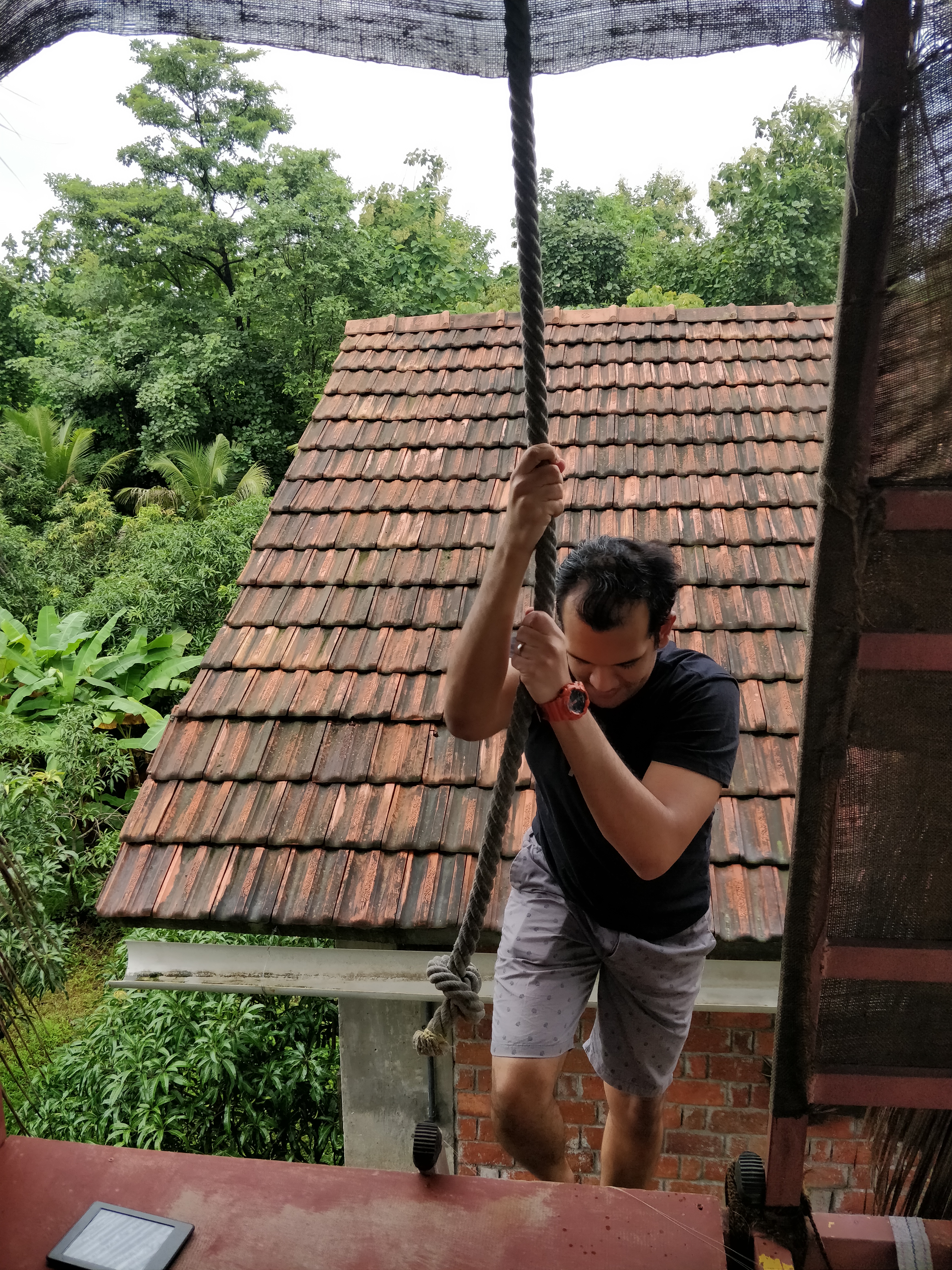

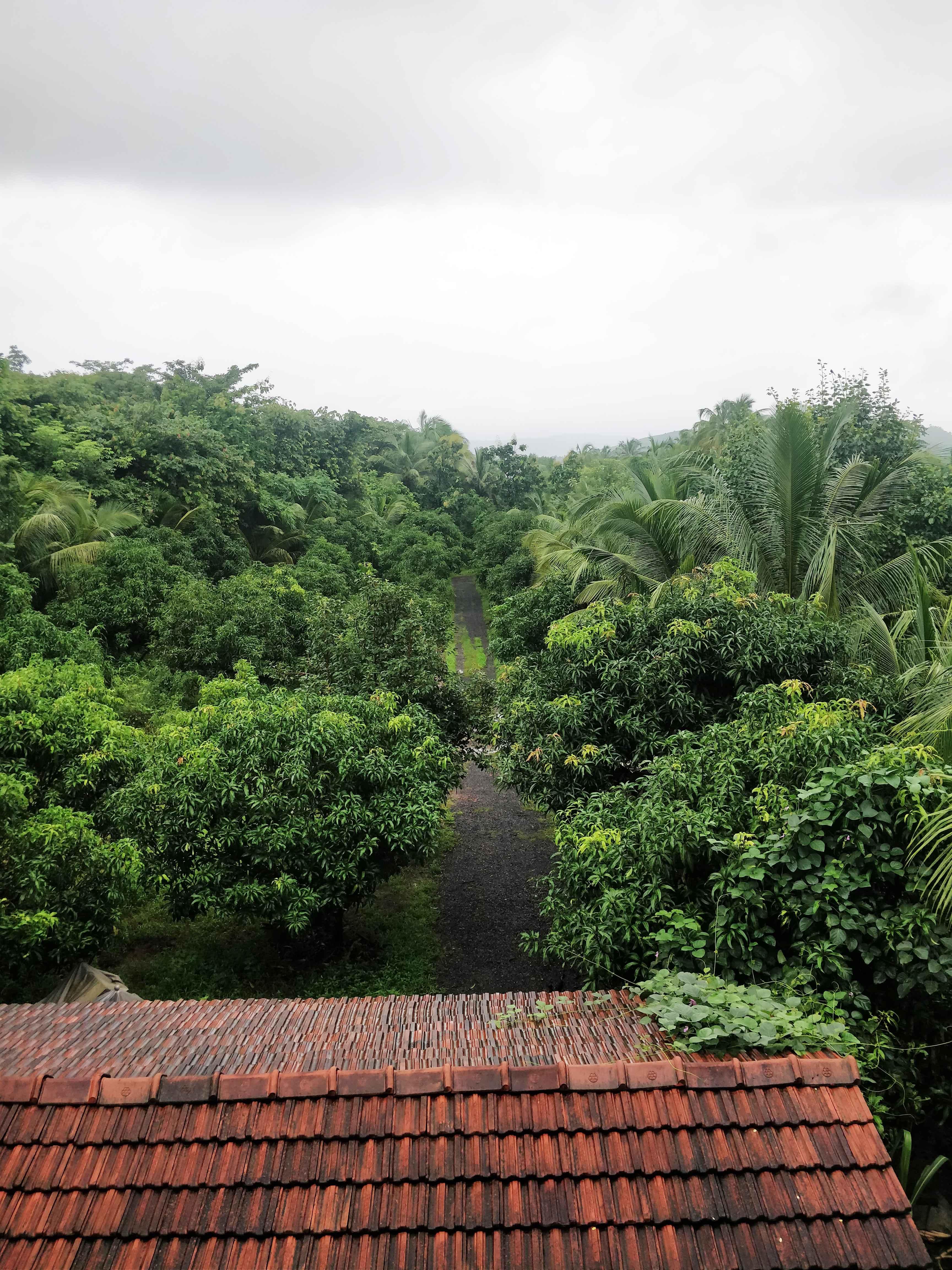

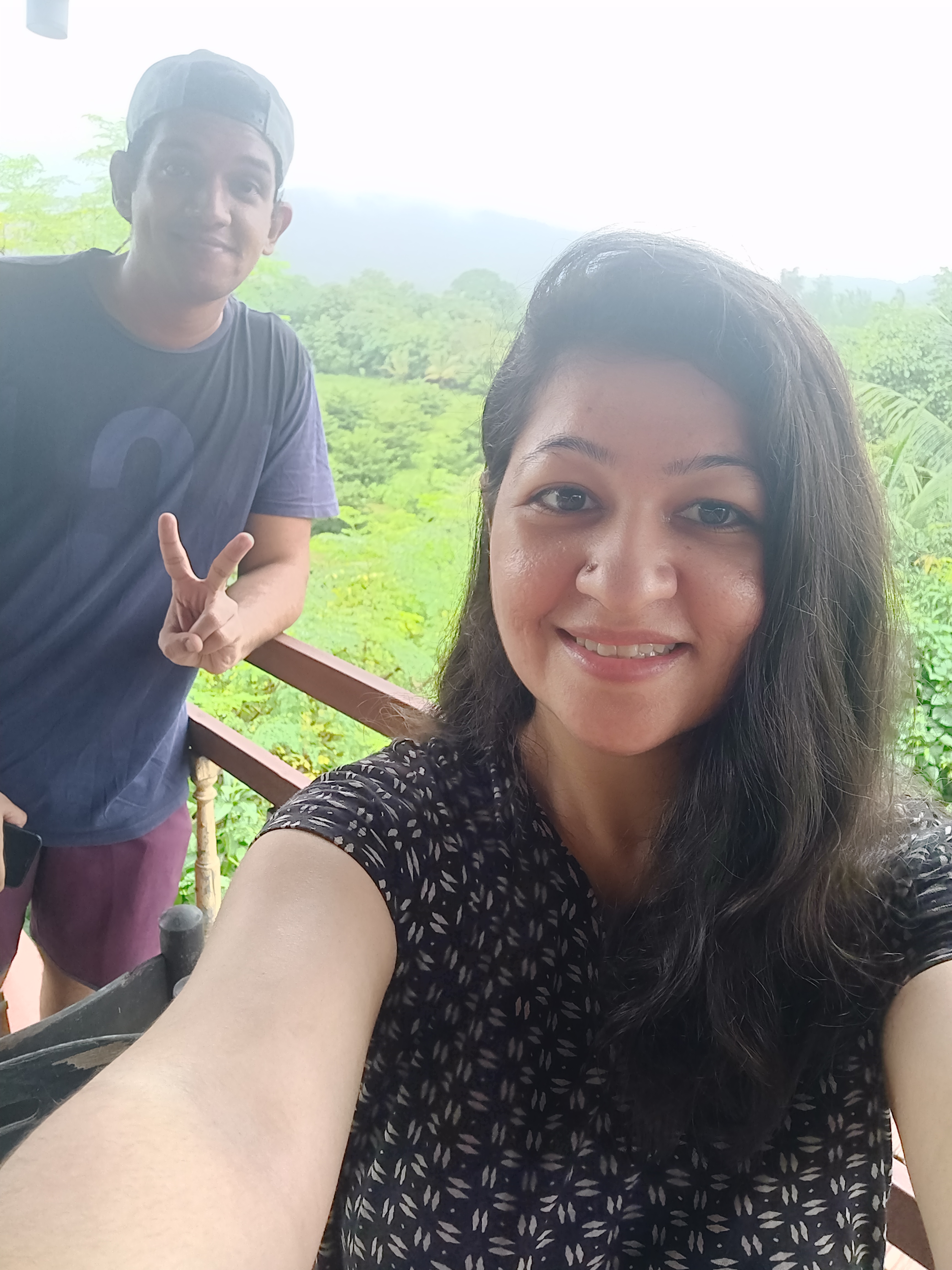

We were put up in the room on the ground floor which belonged to the twin sisters (we would later know they are called Marziyah and Nabila), surrounded by lush mango and banana trees, and a corner bed perfect to daydream and read. The best thing was that the daybed was wide enough to accommodate the two of us, so we spent all our waking hours in the room sitting here, and playing scrabble every night. It gave me the added sense of occupying the lower berth on the train (which i absolutely love), and the best part was that the landscape from the window was forever lush and verdant!
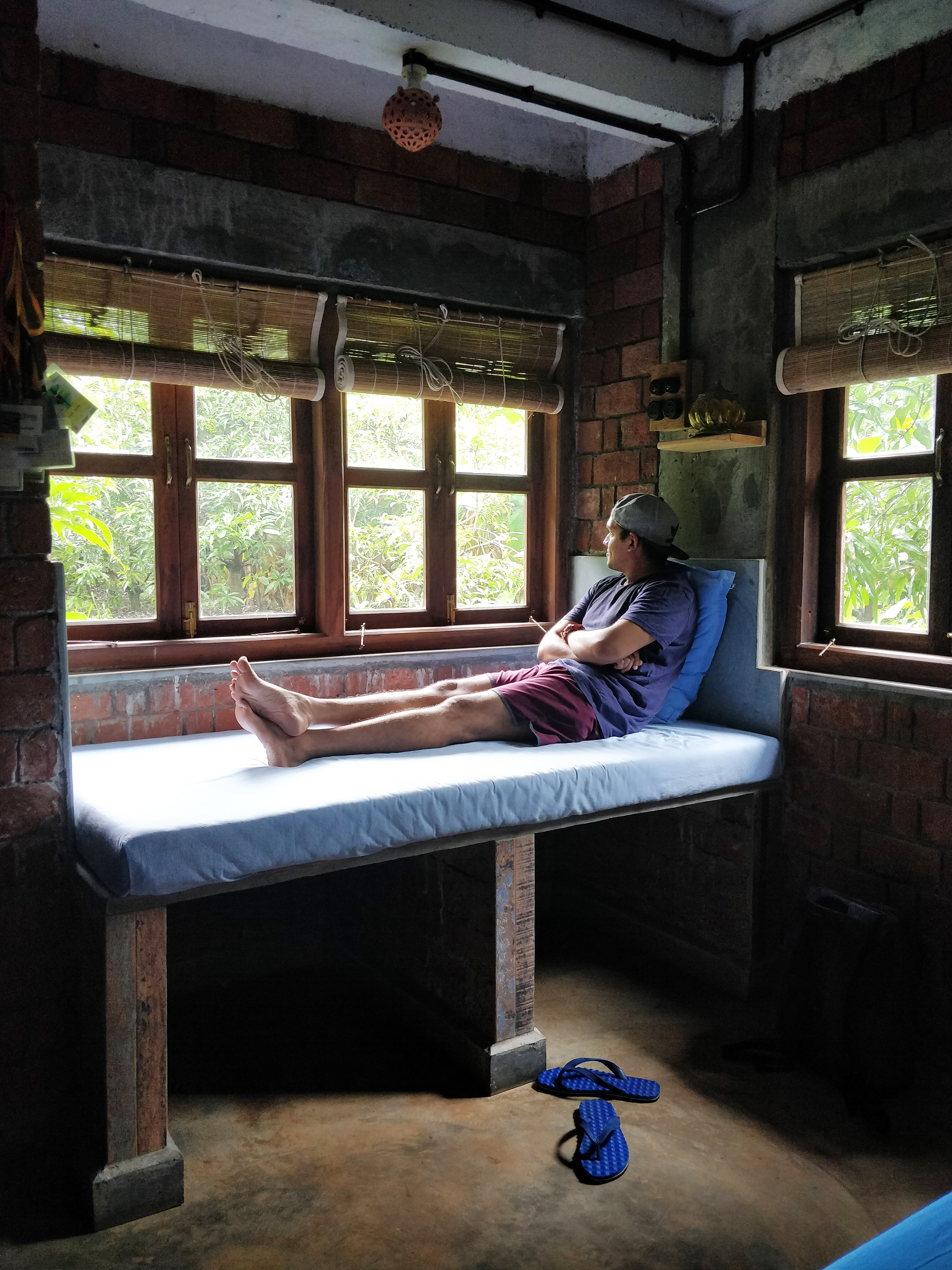
The farm-house, to be significant, should therefore show an absence of all pretension. It should not borrow Grecian columns, or Italian balustrades, or Gothic carved work from the villa; or merely pretty ornaments from the cottage ornee. It should rely on its own honest, straightforward simplicity, and should rather aim to be frank, and genuine, and open-hearted like its owner, than to wear the borrowed ornaments of any class of different habits and tastes. The porch or the veranda of the farm-house should not only be larger, but also simpler, and ruder, and stronger than that of the cottage, because there is more manly strength in the agriculturist’s life than in that of any other class; the roof should be higher and more capacious, for it is to overshadow larger families and larger stores of nature’s gifts; and, above all, the chimneys should be larger and more generous-looking, to betoken the warm-hearted hospitality of the farmer’s home. Their large and simple tops should rather suggest ample hearths and good kitchens than small grates and handsome parlours.
– What a farm-house should be, Andrew Jackson Downing, 1850
We would be found lying in the machaans at various times of the day, until Pradnya would come running up to say Jevan jhaala aahe. Being the only guests on the farm had its advantages – we had the dream food team Swati and Rameshwar’s undivided attention while being served our meals. It was all organic, it tasted like home, and it was served steaming hot. It was also offered to be refilled again and again, and forcefully refilled after Fawzan joined us on the table 😛
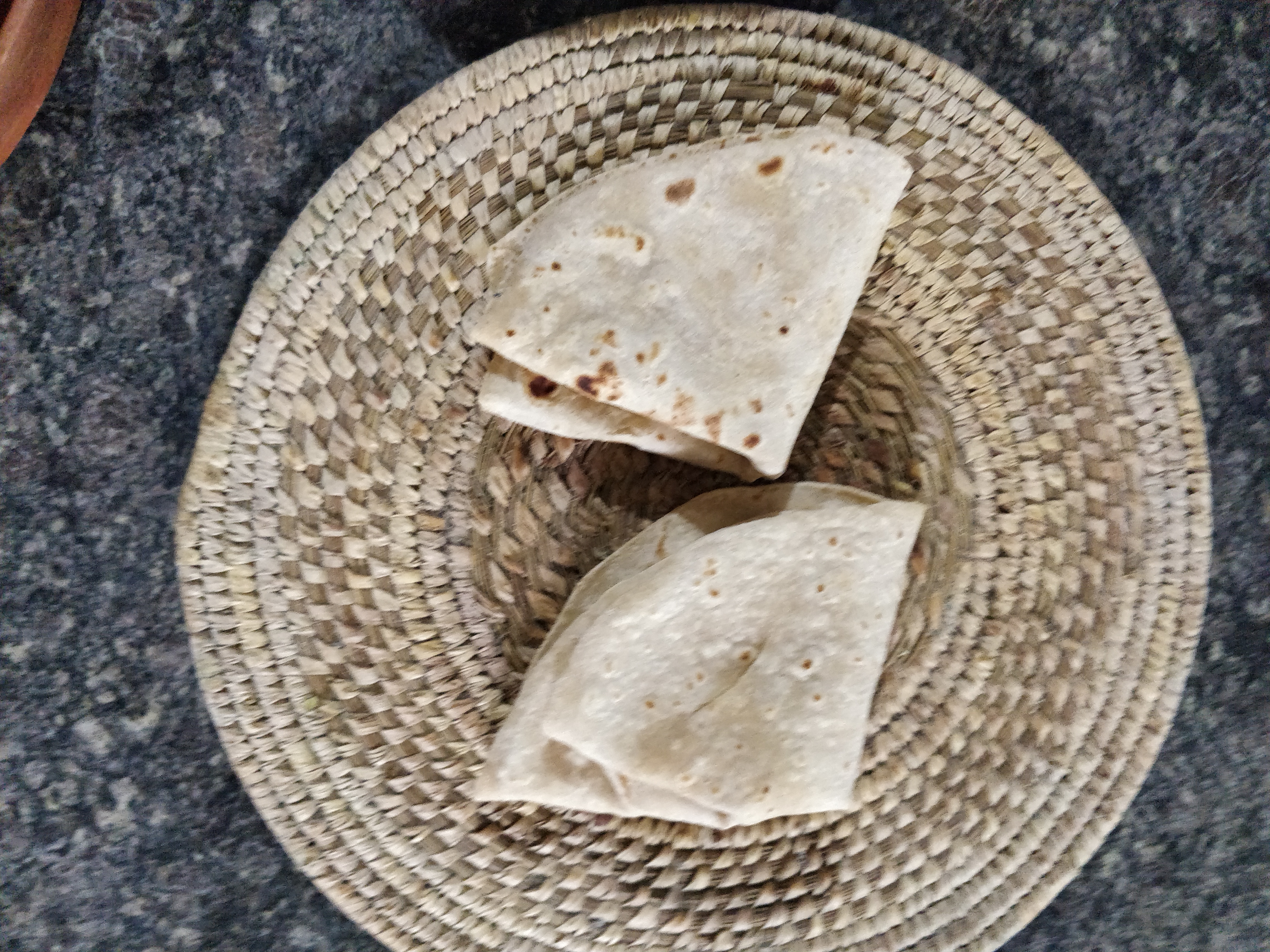
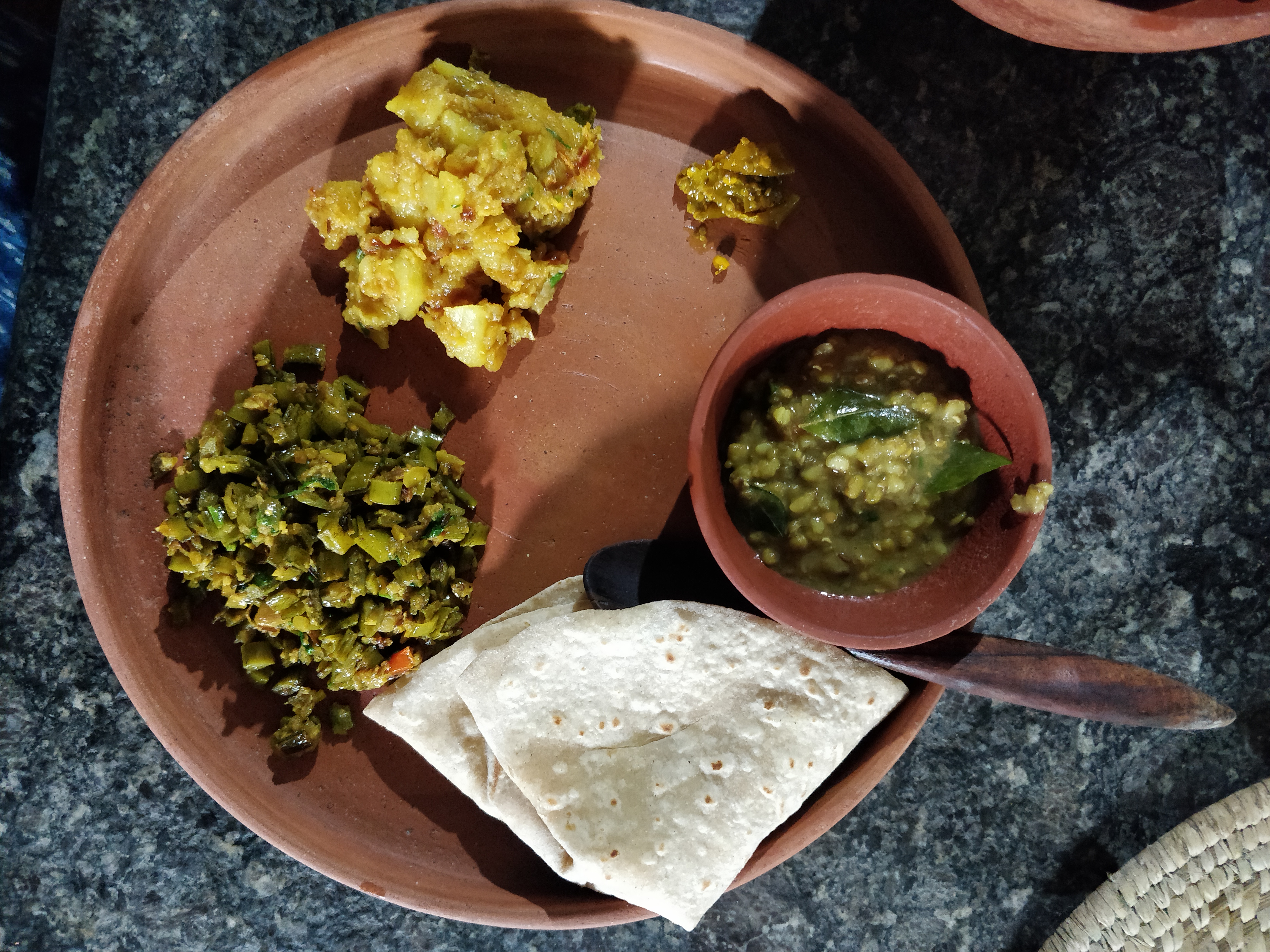
We spent Sunday soaking up the place, taking turns to occupy all pockets of the house, and overeating. Also worrying about close to zero mobile network! Which is hardly us, but the fact that we were yet working through the week made us worry some about how we would manage. Little did we know that in finding airtel network, we would traverse new paths and in the process, make precious new discoveries!


On Monday morning, we woke up early to figure out the elusive airtel network due to work commitments. Trying to find internet on a holiday is very unlike us, but this was different – we were still working from home, and this was home all right! At the house, the network was enough to get by, but both of us needed to be on longer video calls with students/ colleagues, and our search lead us up and down and finally, at the main gate of the farm on the opposite end, where Shindeji lived. We borrowed (read usurped) his otla, his jhoola, and a charging point to keep our devices going for the next few hours. This was new to him – guests hanging in his verandah at 8am, where he dried his clothes, washed his shoes, stored his saplings and took his naps. But he gladly accommodated us, and only popped his head out of his door once to ask if he can continue practicing his harmonium or would it bother us. Curiosity got the better of us, and we asked if we could peep into his house and see his harmonium. We saw the handed-down instrument, but we also saw his handwritten music notes and the joy on his face!
The other best bit about mobile network discovery was the fact that it involved a five minute walk along the fields. In the city, we were ecstatic to be working from home mostly because it allowed us to be off the roads-turned-rivers in monsoon. But in the farm, work needed us to walk five minutes on a gorgeous green trail, which we would’ve otherwise missed experiencing as much. So every morning for the next few days, we would spend our mornings in the verandah sipping on Swati’s chai, which she would spike with tulsi, ginger, lemongrass and all other semi-precious spices :), and then stroll to our ‘work space’ for 8am meetings. Then at 9:30 we would walk back along the farm’s edge for a hot breakfast, allowing new encounters and listening to bird songs each time we walked to and fro. This pattern would repeat another time, until we wrapped up work by lunch time and came back in! One side advantage of the walks were helping us build up a bit of appetite to stuff more of the soul food Swati was always serving.
Post yoga and dinner in the evenings, we all sat in the verandah and heard Shindeji sing ‘aaja sanam madhur chandani mein’ to us and play his beloved baaja. We also spoke of their lives in the village, and in particular some hilarious tribal wedding stories. Such perfectly happy evenings to the days of work and while.

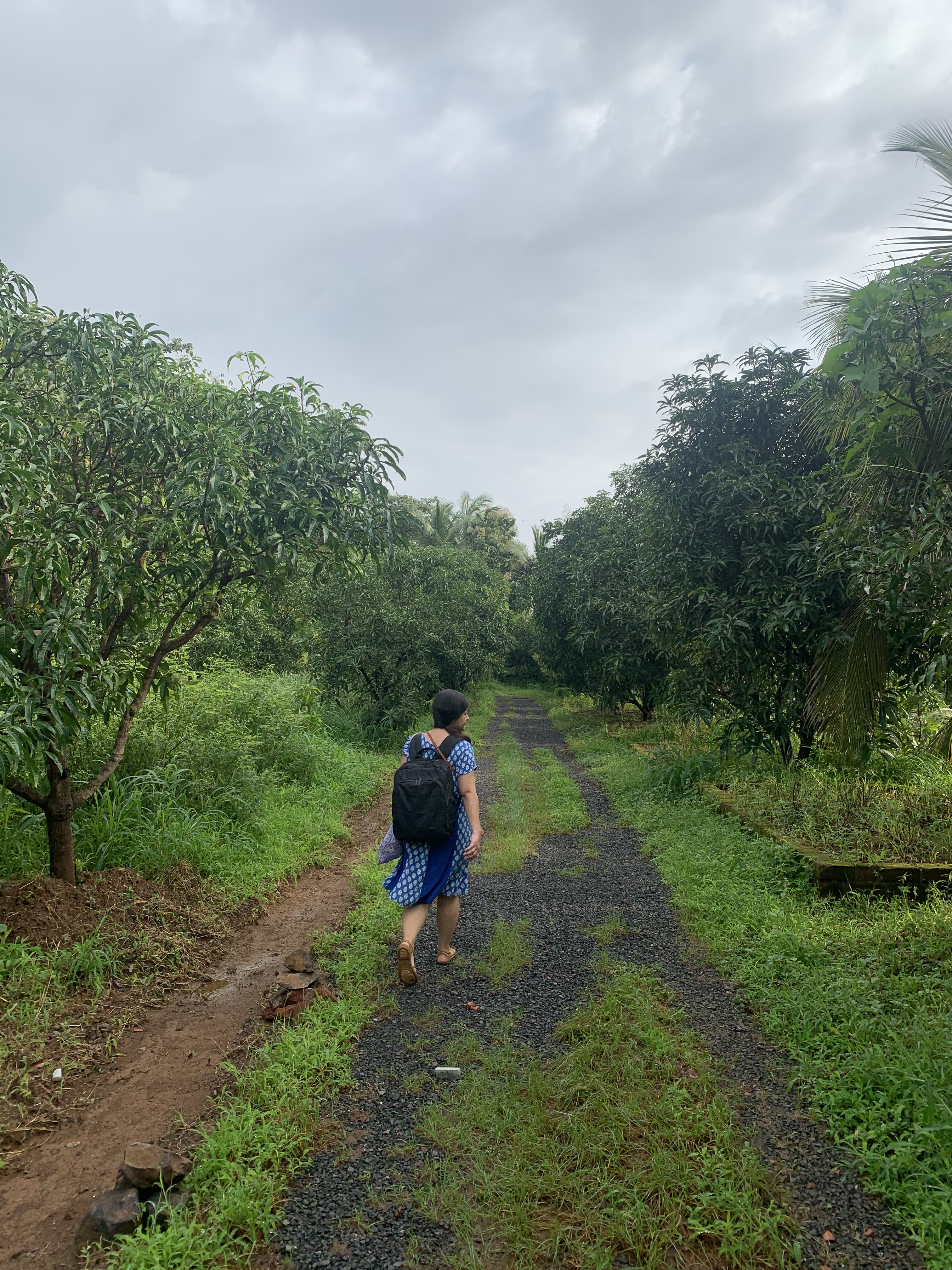
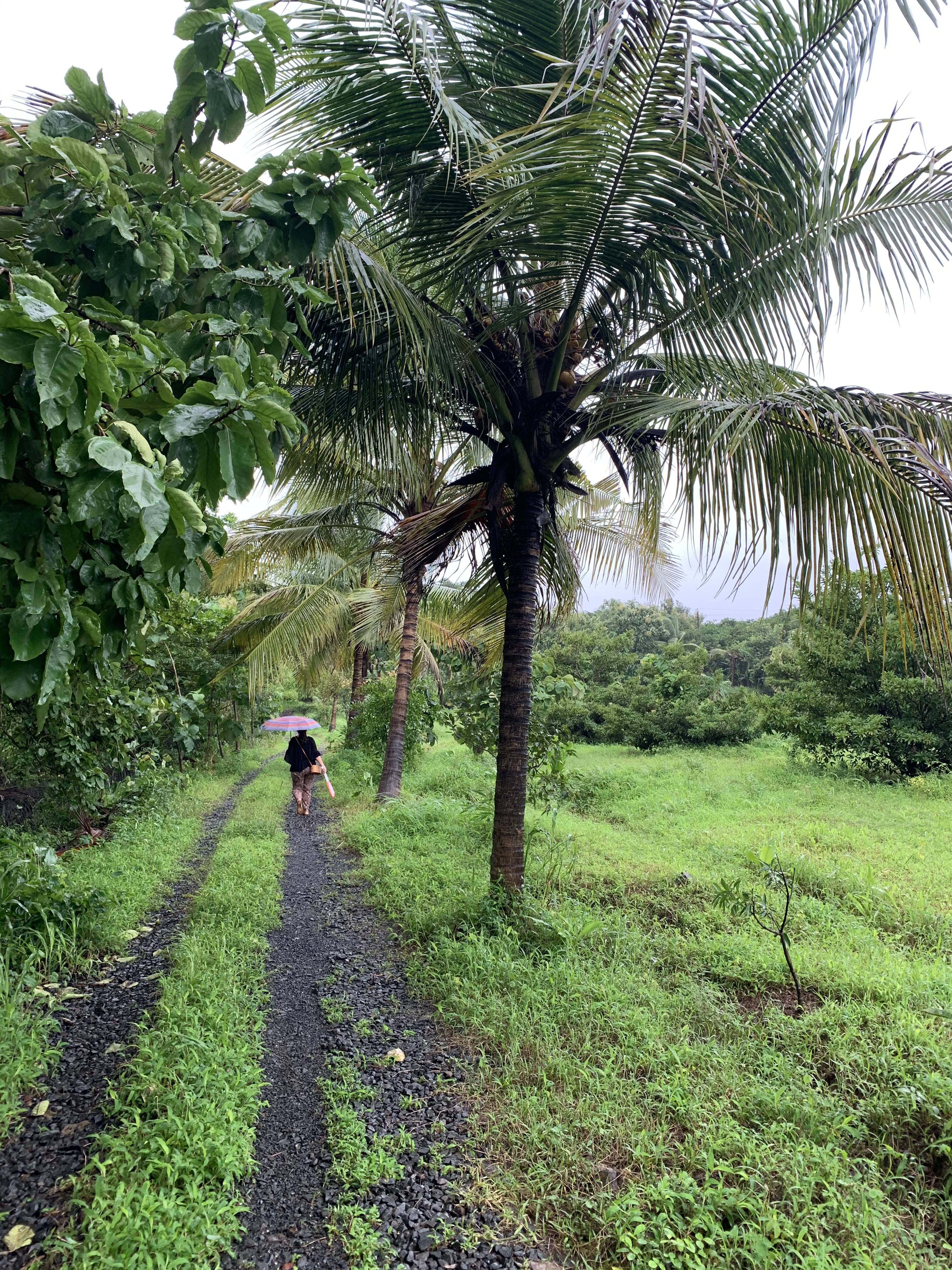







We had been reading through Fawzan’s books and his visual narratives of Bombay city since we came in, and then once he joined us on the farm, we exchanged a whole other bunchful of oral narratives. We learnt that a news piece he was working on years ago led him to discover the toxic conditions in which food is grown along Mumbai’s railway tracks; as a result, the farm came about owing to his family’s choice to turn to more conscious and slow living practices, one of which was growing their own chemical-free food.
We spent an afternoon or two chatting away, jumping subjects – the city and its housing, practices of farming, the trees on the farm and how they grew better when appreciated, the tryst of the smart alec parrots and the sunflowers, stories of construction of the house as it stood now and the contractor’s insistence on wanting to plaster it, M’s nostalgia with roof kavelus from his own house, stories of their family hosting at the farm, their voyages to Banaras and Lucknow, and a whole lot more.
Everyone on the farm was super conscious about the waste that was generated, especially if it was plastic not-so-fantastic. Fawzan was most distraught about the chand mein daag in his house, which was a plastic gutter he had to add to channelize rain water. The bathrooms were stocked with chemical-free washes to ensure one was not adding anything harmful into the ground. At one moment just before sunset, I recall, when I pulled out my odomos cream to slather my skin to keep the mosquitoes away, Fawzan was quick to point out how it will not let our skin breathe! We opted for a fabric roll-on instead, and it immediately reminded me of how he feels about his exposed brick walls as well!


Post lunch one afternoon, we joined Fawzan on the farm, where they were busy prepping the mulch next to a kaaju tree. We followed him around his work as he fed his backyard chickens, and pointed to four eggs in the basket, which would be tomorrow’s anda bhurji breakfast! 😀 (We carefully carried them with us through the rest of the walk, making sure they remained safe.). He walked us around his fruit trees, 5 of each type – which included jamun, papaya, chikoo, jackfruit, sitafal, there was of course mango and rows of banana. We learnt of the water management at the farm, how they had only allowed river water to come in directly; and the water from neighbouring fields which was probably laden with pesticides and chemicals was actually allowed to bypass without getting absorbed in the soil.
We learnt of how the original ground was levelled to form some flat ground on two sides for the house and the orchard to sit, while we spotted the maize, the sabudana and the bhindi plant. I had no idea tapioca existed in the brown bulgy form! The story of the combo chikoo tree with the turmeric growing under it was finally revealed to us – the freshly sown turmeric had got washed down in one massive downpour, and some of it got accumulated near the roots of the tree. We also saw the dry coconuts being stored away for oil extraction later.
Closer to the house, we crossed Indian teak, and stopped to smell the all-spice plant, and taste the sweet stevia leaves. Also got our hands a bit dirty picking some lemons 🙂














Our stay came to an end, as did my module on home spaces, and it reinstated that typology shaped and got shaped by its dwellers. (Disclaimer – The module was not comparing a city apartment house and a house on a farm; in fact the module looked at life as it plays out in four house types dominant in the city (of Bombay) – the apartment, the chawl, the urban village house and the auto-constructed settlements.)
(Henry) Thoreau emphasized the cleanliness and freshness of his half-finished Walden summerhouse, and wrote of the healthfulness of his house as standing in contrast to most houses. And at Walden he had written,
from our village houses to this lodge on the shore of a beautiful lake in the midst of a green forest, where hardly any traces of man were visible, was a transition as from a dungeon to an open cage at least in a pleasant grove, where I could glimpse the light & the flowers through the bars … [author’s ellipsis] It was invigorating only to sit there and drink and be bathed in this uncontaminated current. The atmosphere of our houses has usually lost some of its life giving principle and it is necessary to our health and spirits frequently to go out, as we say, to take the air.
– Thoreau’s house at Walden, William Barksdale Maynard (1999)
In case we forgot to mention earlier, Arwa means Pure.
🙂
As always you have tugged my heart strings with your visually appealing travelogue especially more so now that we are all tied down. This blog was like petrichor for me. Thanks a lot.
LikeLike
Thank you for reading and enjoying 🙂
LikeLike
Great write up, deeply appreciate, very nicely expressed the life of a farm, i feel i should visit this place,good willing, your way of expressing is fantastic, keep writing, god bless, all the best
LikeLike